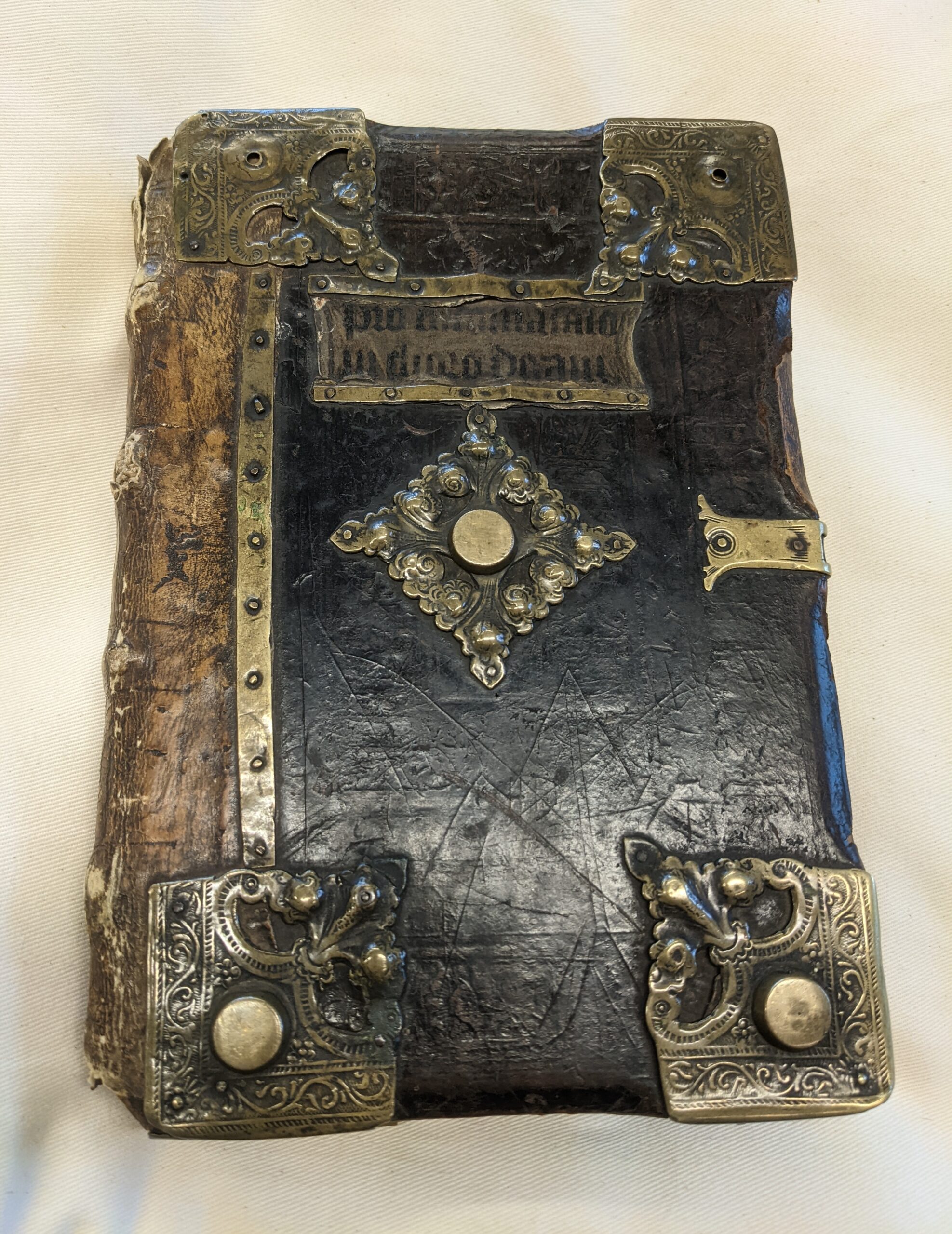Look at that cover. So metal. So much bling.
The extensive metal fittings on this fifteenth-century German Office of the Dead are what first catch the eye, but this little manuscript is more remarkable for its contents. Used for centuries, perhaps daily, to remember the dead, this manuscript attests to medieval and post-medieval communities sustained beyond the grave.
This manuscript opens with a colophon on fol. 3r that tells us where and when it was made. In 1487 Johannes Ehrlich, Archbishop of Trier, commissioned it for the church of St. Kunibert in Cologne, Germany.

It contains all the liturgical texts that the canons (think monks lite) of St Kunibert’s would need to commemorate their deceased community members: the Office of the Dead, the three services the canons would say starting the evening before a funeral; the funeral service itself; and some auxiliary prayers. The opening prayer includes musical notation, a reminder that the canons would have sung these services in community, collectively remembering their brethren in song.
Manuscripts that only include services for the dead are unusual. Any monastery or church owned many books with the scripts for different offices, masses, and prayers, but these books were usually organized by type of service (mass, office, etc) or type of text (hymnal, processional), not occasion. Services for the dead were typically dispersed among different books. The funeral mass would have appeared in a missal, the book that contained the directions for masses (Hughes 157-59); the Office of the Dead frequently appears in breviaries, the book with directions for the daily Office, or in psalters (Hughes 238, 240-41); and the directions for how to conduct a funeral would appear in a customary or ordinal (Krochales and Matter 401, 411). So to have a single manuscript containing only the services and prayers for honoring the dead makes it special.
This manuscript would have been used more frequently than just for funerals. The commemoration of the dead was a major task for medieval monks and canons, and many communities prayed for their deceased members monthly or even daily. Such prayers were thought to help the dead move through Purgatory faster, so late medieval individuals would pray for their deceased loved ones regularly. And this manuscript shows evidence that it was used by the canons. A lot.
The parchment is supple and worn, the lower margins blackened by generations of fingers:

Tears have been carefully mended:
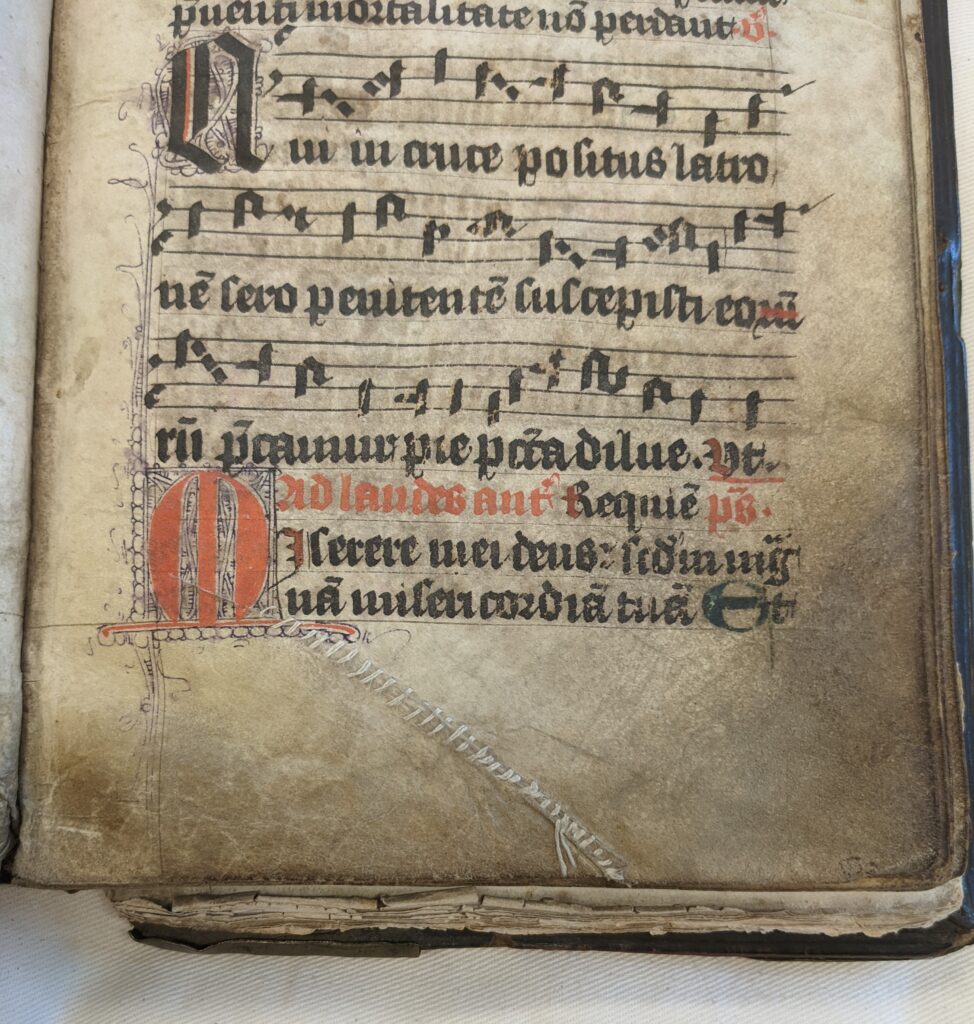
The text has been updated in places by a later hand. Here, “benefactores” (benefactors), donors to the church, has been added to the prayer:
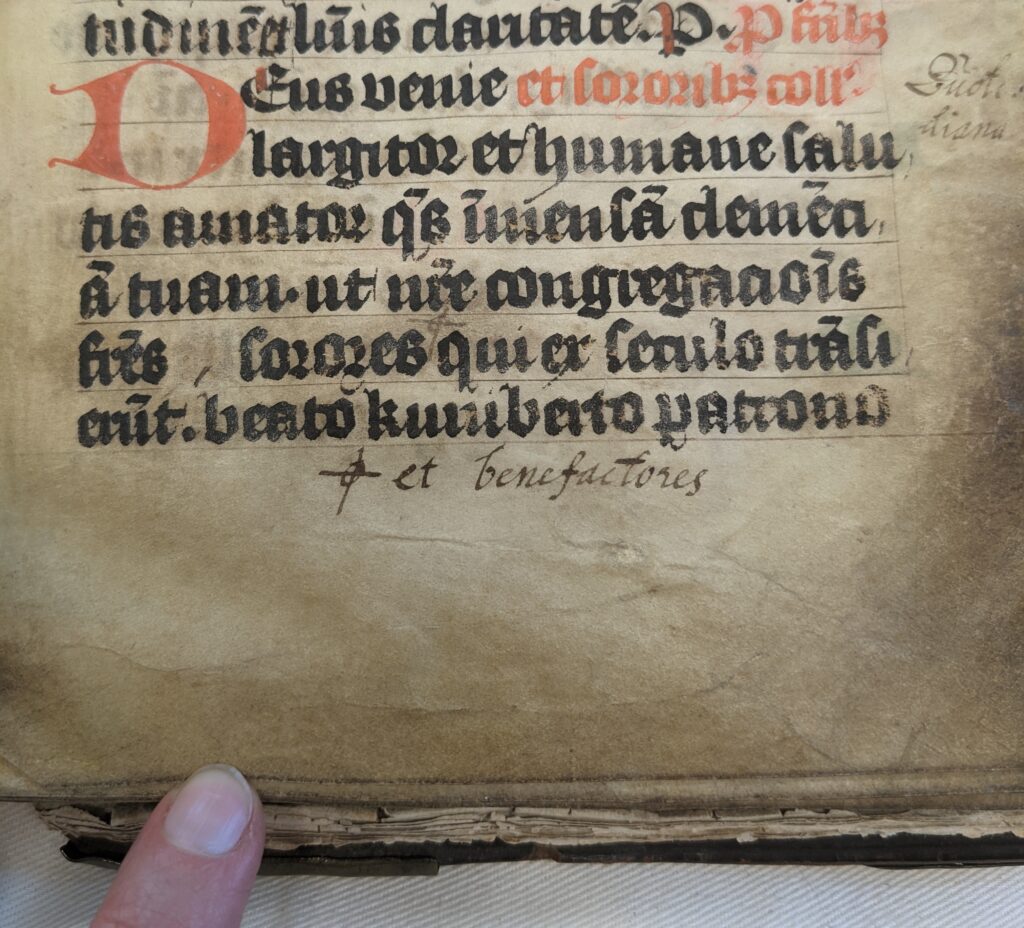
And a prayer was added in the sixteenth century for the soul of Provost Andrew, the head of the community:
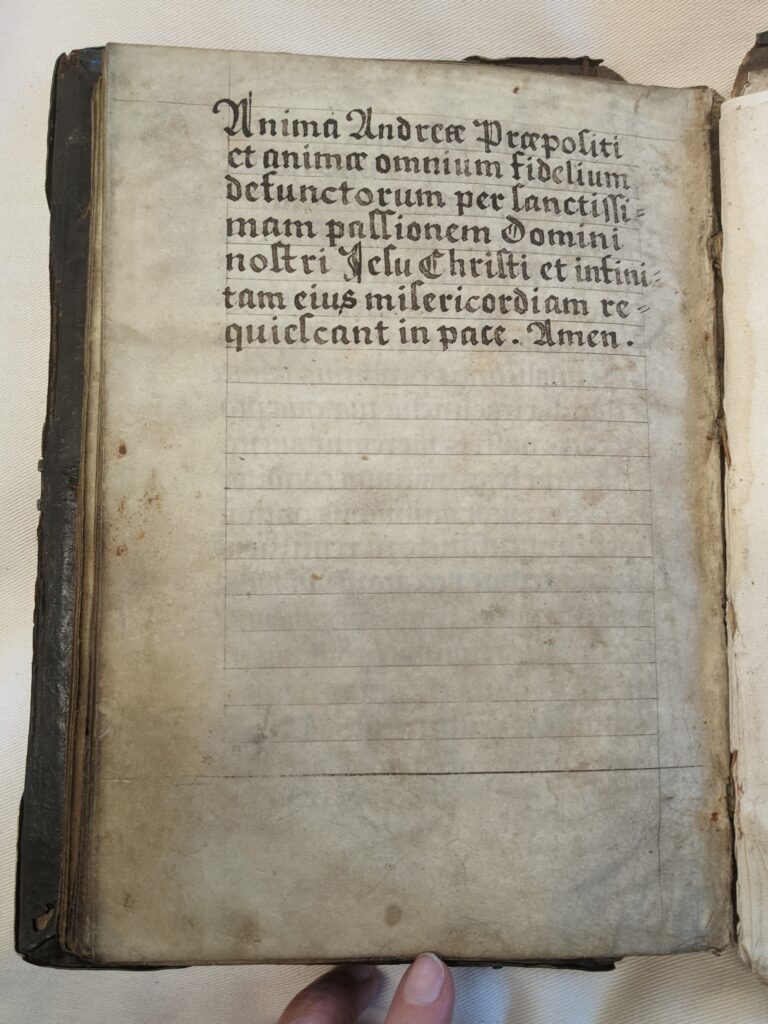
The most remarkable evidence of regular, continued use is the paper quire added at the end. Its colophon states that it was compiled in 1727 and contains the names of the deceased, often with their burial locations, for whom the contemporary canons would say the Office of the Dead on a regular basis. The rest of the quire is laid out like a ledger: each two-page spread is dedicated to one month, and the pages are ruled in three columns: a column for the death year, another for the death date, and a third for the name, profession, and burial location for the person to be commemorated. While most of these names are those of canons of St Kunibert’s, some are for laypersons (including some women). This collection of names — a necrology — appears to have been copied from an earlier record, because all who died before 1727 have been copied out at the same time. The necrology was clearly kept up, because names and dates were added to the 1760s.
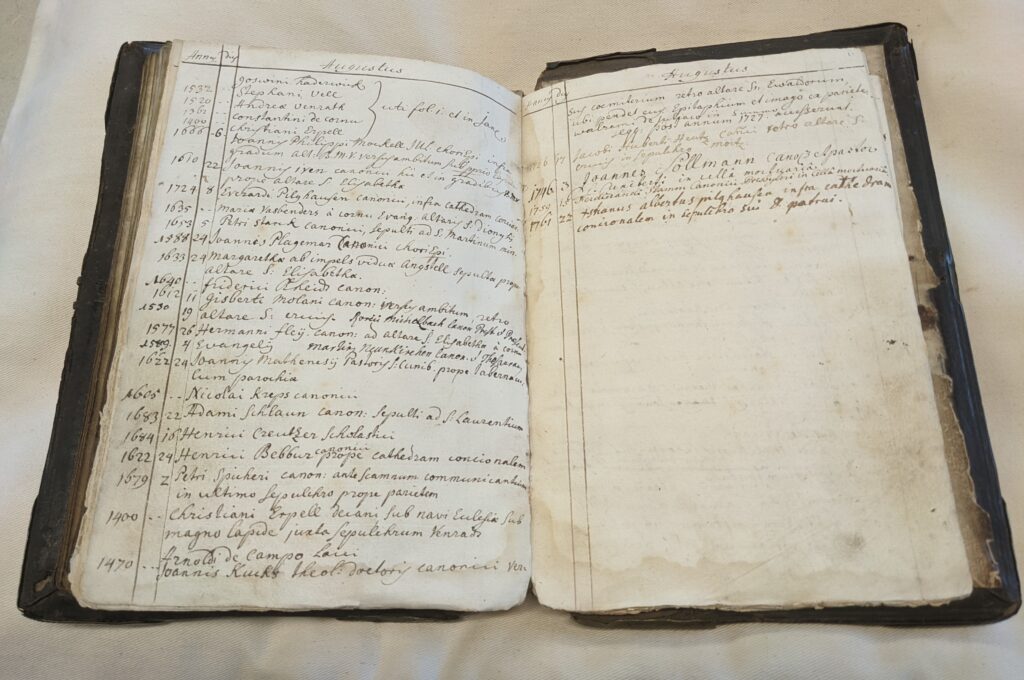
This book therefore provides a snapshot of continuous ritual practice in a German religious community, extending from the late medieval period through the upheavals of the reformation and counter-reformation. It is a melancholy object, in that it has been separated from the town where it was used, but it is also a hopeful one, preserving in perpetuity the names of St. Kunibert’s most honored dead.
Featured image: the 16th c. cover to the Cologne Office of the Dead
Works Consulted
Courtenay, William J. Rituals for the Dead: Religion and Community in the Medieval University of Paris. Notre Dame: University of Notre Dame Press, 2019.
Hughes, Andrew. Medieval Manuscripts for Mass and Office: A Guide to their Organization and Terminology. Toronto: University of Toronto Press, 2017.
Krochalis, Jeanne E., and E. Ann Matter. “Manuscripts of the Liturgy.” In The Liturgy of the Medieval Church, ed. Thomas J. Heffernan and E. Ann Matter, second ed. Kalamazoo, MI: Medieval Institute Publications, 2005, 393-430.
Les Enluminures, TM 644, Cologne Office of the Dead
